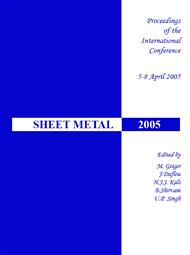p.763
p.771
p.779
p.787
p.795
p.805
p.809
p.817
p.825
Methods for Monitoring of Laser Cutting by Means of Acoustic and Photodiode Sensors
Abstract:
Laser cutting is a well-established sheet metal processing method. Nowadays a trend towards the cutting of thick plates (> 15 mm) can be observed. However for these thick plates the process window in which good cutting results can be obtained is more narrow compared to that for thin sheets due to the very difficult balance to be found between the different process parameters. Even after determination of the process window, a good cutting quality cannot always be guaranteed. Therefore cutting of thick plates is still characterized by a large scrap percentage, which impedes a breakthrough to large scale industrial use. A solution to this problem is to incorporate a sensor system in the laser cutting machine that monitors the cut quality on-line. This monitoring system could then be integrated in a process control system, which adapts the process parameters in function of the observed cut quality in real time. In this way a good cut quality could always be guaranteed. In this study, the first step in this direction, the determination of an appropriate monitoring system, is dealt with. The applicability for monitoring purposes of two types of sensors is investigated: a microphone and a photodiode. For both types, correlation between the sensor output and the cut quality is investigated in a qualitative way. The scope of the reported research was not limited to contour cutting, also piercing is covered in the study.
Info:
Periodical:
Pages:
809-816
Citation:
Online since:
May 2005
Authors:
Keywords:
Price:
Сopyright:
© 2005 Trans Tech Publications Ltd. All Rights Reserved
Share:
Citation:


